JOURNE TO THE STARS
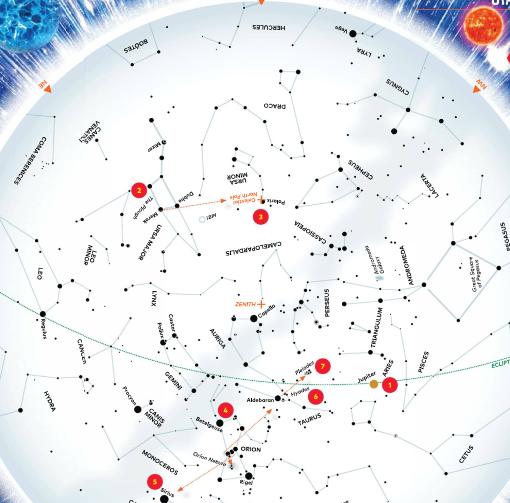
For centuries, humans have mapped the night sky, weaving patterns and stories into the heavens. These star charts reveal pathways that stargazers can follow to take a voyage across space. In February, people across the UK will be doing just that, as dark sky festivals take place up and down the country. Come with us on a tour of the night sky and discover the wonders of the cosmos.
It can get very chilly at night at this time of year, so make sure you’re dressed for the cold, with a warm coat, gloves and sturdy shoes. Step outside and find an observing spot away from the glow of street lights – be sure to ask an adult to come along if you want to go beyond your front doorstep or back garden.
When you look up, try to orient yourself on the star map (right). The map shows the whole sky as it appears around 8pm in early February (or 6pm at the end of the month). To quickly find your bearings, remember that the Sun sets in the southwest. The zenith is the point directly above your head, while the horizon forms the map’s edges. The numbers on the map mark the main stops on our tour.
Don’t worry if you can’t see much at first – your ability to see faint stars improves as your eyes get used to darkness, so try to block direct light sources (if all else fails, use an umbrella). Now, you’re all set.
1 Jupiter
Diese Geschichte stammt aus der Issue 71-Ausgabe von The Week Junior Science+Nature UK.
Starten Sie Ihre 7-tägige kostenlose Testversion von Magzter GOLD, um auf Tausende kuratierte Premium-Storys sowie über 9.500 Zeitschriften und Zeitungen zuzugreifen.
Bereits Abonnent ? Anmelden
Diese Geschichte stammt aus der Issue 71-Ausgabe von The Week Junior Science+Nature UK.
Starten Sie Ihre 7-tägige kostenlose Testversion von Magzter GOLD, um auf Tausende kuratierte Premium-Storys sowie über 9.500 Zeitschriften und Zeitungen zuzugreifen.
Bereits Abonnent? Anmelden
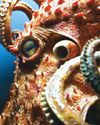
SECRETS OF THE SEAS
Take a deep dive beneath the waves as Melissa Hobson reveals the incredible animals that live in our seas.
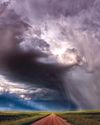
Controlling the weather
Is technology being used to change the weather, or is it science fiction?

NEXT STOP: THE FUTURE
All aboard as JD Savage takes the fast track through 200 years of train travel.

The race is on between robots and humans
Twenty-one robots competed against human runners in the Yizhuang half-marathon in Beijing, China in April.

Growing baby corals
Meet the UK scientists giving breeding corals a helping hand.
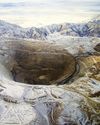
Could you dig all the way through the planet?
Learn the science behind digging a giant hole.

Fabien Cousteau
Meet the ocean explorer who plans to build a futuristic base under the sea.

Gladiators fought big cats for entertainment
Scientists have found the first physical evidence in Europe that Roman gladiators fought lions.
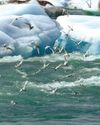
HEADSCRATCHERS
Hi, I'm Pete, and I love science and the natural world. I work with the Royal Institution (Ri) in London, where you can find exciting, hands-on science events for young people.

Life on another planet?
Scientists have found molecules (groups of atoms) that could point to life on another planet.
